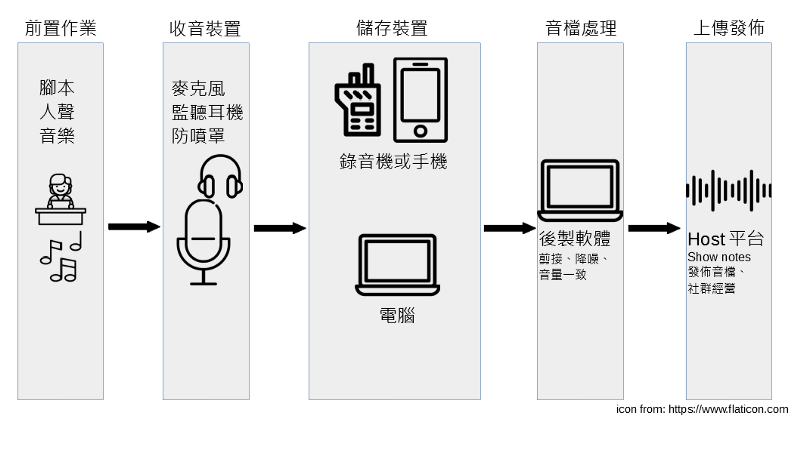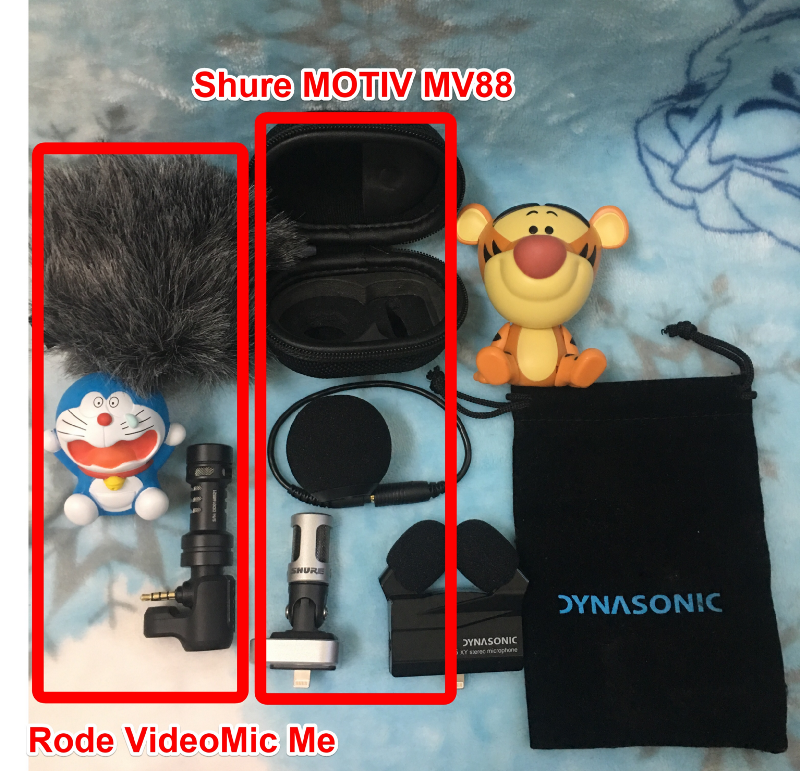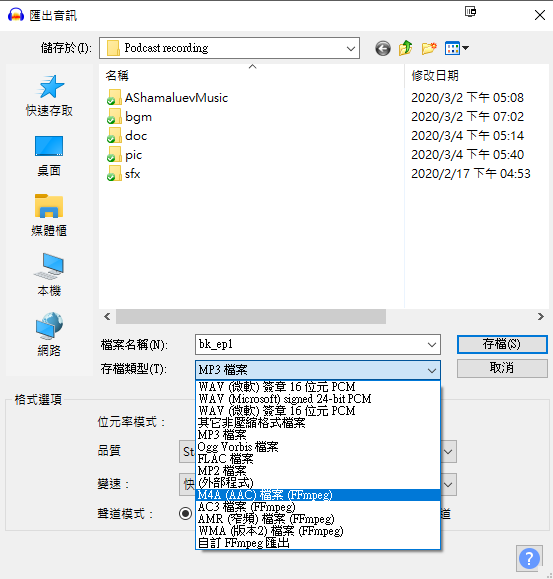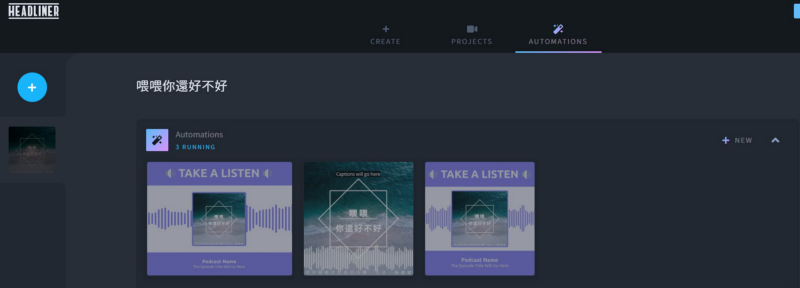[Podcast Teaching] Power-saving SOP for making a podcast of chicken cakes when the battery is broken
Equipment and workflow are constantly modified with experience
This article is about three months after the show started, and the notes I sorted out when I started to get started gradually. It is suitable for beginners to veterans. The only difference between veterans and beginners is probably to start the course fee to upgrade the software and hardware. XD
The only focus: simplify equipment and workflow as much as possible

Pre-work
First look at the outline of the pre-speaking content, and type the verbatim script in the format of one sentence and one line, so that it is convenient to read the verbatim script when reading the official recording* (Note 1)
Advantages of Verbatim* (Note 2):
- It's the content of your own words, and the recording will not have the feeling of a standard script - Simple and a lot of redundant words (uh, then, come again, that... etc.)
- It doesn't matter if you miss the script a little, you can pull back the main line of content according to the script - Easy to estimate the length of the program (assessed according to the number of words and personal speaking speed)
- Avoid forgetting what you want to say
The above advantages make post-production almost no need for editing, just deal with noise and fine-tune the tone.
Disadvantages: Compared with direct recording after listing the outline, the pre-work is time-consuming
The equipment is as simple and convenient as possible
Recording environment: own room (quiet enough)
microphone:
- Shure MOTIV MV88 is connected to iPhone for direct recording, the official app is very easy to use - Audio-Technica ATR-2100 moving coil USB/XLR microphone, USB connected to computer or iPhone for recording - (after upgrading the recorder) Audio-Technica MB3K, Shenhaier E945
Monitor Headphones: Superlux HD681B
Recording app: Shure MOTIV Audio
Post-production software: Audacity
Recorded files can be transferred to computer via iCloud or Sendanywhere app for simple post-production and soundtracking


Audio-Technica has released a series of dynamic USB/XLR dual-connector microphones: AT-2005, ATR-2100, ATR-2100x If you upgrade the recording interface or recorder in the future (most use XLR connectors), you can save a fortune for microphone upgrades. cost
The monitoring headphones can hear the sound in real time. It is recommended to use a style without too many special effects.
Further reading:
Uncle Jesse's equipment purchase recommendation article - [PODCAST] Uncle Tuiken article equipment selection from 3,000 to 30,000

Macro automation for post-production processes
The audio file is transferred to the computer, and the macro can be set to apply to the audio track with Audacity post-production (lazy method)
Notes on macro settings and post-production of audio files will be explained in another article.
Sound effects, soundtrack material library
Note that you cannot use YouTube's sound effect library . It is against the terms of use to publish the platform material outside of YouTube. If you have an Apple device, you can use GarageBand's material or compose your own music and make sound effects.
Firstory Hosting users can use the creator's backstage music library to use the signed music, only for podcast production
Output the finished audio file
Apple podcast officially recommends using the aac file format to achieve the best playback effect. Windows system audacity needs to install FFmpeg plug-in separately (the official website has a link)


The output audio file is uploaded to Hosting and published to the playback platform
It is recommended to use a local hosting service provider to avoid RSS feed problems caused by Chinese character support problems
Taiwan's local Podcast Hosting service platform: Firstory, SoundOn, Baabao
Anchor hosting quickly removed from the shelves
Convert audio files to video and upload to YouTube, make short trailers to IG and FB
- You can use video editing software to add your own logo or record live videos - Use online services Headliner or Wavve , for details, see the introduction of TAIWAN PODCASTER's huge information package
I use Headliner, which can automatically transfer files for you by submitting rss feeds,
Convert the video email notification, upload youtube, IG, FB with one click or download and upload to other platforms
Set automatic transfer to 3 templates: full episode (for youtube), 15 seconds, 60 seconds (for IG&FB),
The short trailer will automatically capture the clip, usually I use it directly, and if I occasionally feel that the clip has no beginning or end, I will edit and fine-tune it.
There are also other creators who share that the automatic subtitles are very accurate. The accuracy rate should be more than 80%. I don't use subtitles.

It will run automatically when the RSS feed is updated,
If you update at 6 pm on Friday, you will probably receive a successful email the next morning.
Wavve is not sure if there is this function, but I have seen other people's layouts, which are more colorful and cute than Headliner.
I'm a free boy, just use it, the watermark is for others to print, the program doesn't need to be written by me, it's good to make a fortune and then pay for the class XDDD
Practical explanation and demonstration of chicken cake
Using screen recording to record an episode of verbatim recording, the habit of verbatim recording has continued from the show's opening to the present.
The terms of use of the Hosting service platform have been updated respectively. Please read the teaching and instructions of each company before using it.
education resources
According to the production process, the chicken cakes are classified into teaching texts (mainly traditional Chinese), and Uncle Jesse provides statistical reports every month.
TAIWAN PODCASTER Huge Information Person Pack
annotation
- Why Chicken Cake chose to use verbatim recordings:
During pre-speaking, I type while I speak (I type fast enough), and when recording, I look at the verbatim script that was typed during the pre-speaking. So if you have to do the math, you need to speak twice and record once, but almost no editing is required, as long as noise reduction and fine-tuning of the EQ are all you need, it won’t be particularly labor-intensive, and there’s no need for multiple recordings and then editing.
Another advantage is that when I don't have enough power or the content I conceived is not complete enough to reach an episode, the pre-speaking can gradually accumulate the content in segments, and just follow the paragraphs before recording.
The verbatim script is what I have said, so there shouldn’t be any bluntness in reading the script. In this way, the recording also greatly improves my stuttering and long pauses between words when I am sick (normal speaking and pre-speaking happen, and reading after The script can be avoided), and I haven't received any feedback like the machine reading the script or the tone is too blunt.
Compared to post-production, using verbatim recording is more energy-efficient for me. - Jia Li (voice expression trainer), the store manager of " Good Times Papa Papa " shared:
In the way of professional training, I would suggest to organize the manuscript first (organize the thoughts), and then recite it a few times, so that the thoughts and the muscles of the mouth can be connected by bluetooth. (The average person is not very connected)
When the official recording is made, "don't" read as written. You can see it. It will be recorded naturally and smoothly.
There will be redundant words. In addition to habit and tension, there are also thoughts that can't keep up, and the mouth will fill in the blanks by itself.
Reading from script is generally not recommended, as reading from script is a more difficult exercise.
If it is effective, when speaking and thinking can be synchronized (or even ahead of time), you can gradually turn into writing an outline, and the recording will be smoother. The eloquence in life will also improve.
Of course, if you want to make a program quickly, you can also speak directly and then trim it afterwards.
see what your goal is
Chicken cake shreds
With the current production process,
Actual completion of an episode of about 30-40 minutes of Podcast content,
It takes about 3 times as long as a single episode from the idea to the completion of the release.
That is about 2-3 hours to complete an episode,
In the current limited waking time and ability to concentrate,
It can be loaded to update an episode every week.
above.
Happy Podcasting!

// The original text was published on Medium, updated the invalid link and added personal application and experience//
Become an Appreciative Citizen or join the Podcast Monthly Consultation Piggy Bank, or buy me a cup of honey tea,
Support my podcast creation, write free podcast production teaching articles and promote Xiaoyu related health education activities
👌🏼【I am Chicken Cake】Links of appreciation class: https://liker.land/ww-howbuhow/civic
👌🏼 Podcast Sponsored Link: https://pay.firstory.me/user/wwhowbuhow
👌🏼Creating daily reflections and small talk at Liker.social Xiangte: https://liker.social/@wwhowbuhow
§ Podcasts §
" Hey, are you okay ": the daily life of an active-duty depression patient
" Chicken cake hatching ": Podcast sound content production teaching, behind-the-scenes idea sharing
Like my work? Don't forget to support and clap, let me know that you are with me on the road of creation. Keep this enthusiasm together!



- Author
- More